Oscilloscope Method
How to diagnose a timing chain fault in the YD25 D40, D22 Navara & R51 Pathfinder engine using an Oscilloscope.
This page explains the methods used to diagnose a timing chain fault in the Nissan Navara D40, D22 & Pathfinder R51 YD25 engine using an oscilloscope.
Buyer beware!!!!! Be very cautious before spending money on a timing chain job without having this check done first. We do this diagnostic test with you looking over our shoulder. The purpose of this page is to educate you so you don't get ripped off. Below I explain to you in detail what each capture means. I encourage you to take photos of the screen data. Few workshops have this device due to the equipment cost and also for the fact this test tells you exactly as it is. This is a free service we provide. Don't miss out it could save you thousands.
How to diagnose a timing chain fault using a pico scope.
The pico scope we have is a 4 port device. We use port 1 blue to connect to the crankshaft sensor. We use port 2 red to connect to the can sensor. The black earths must be grounded. The usb cable is connected to a laptop loaded with the software.
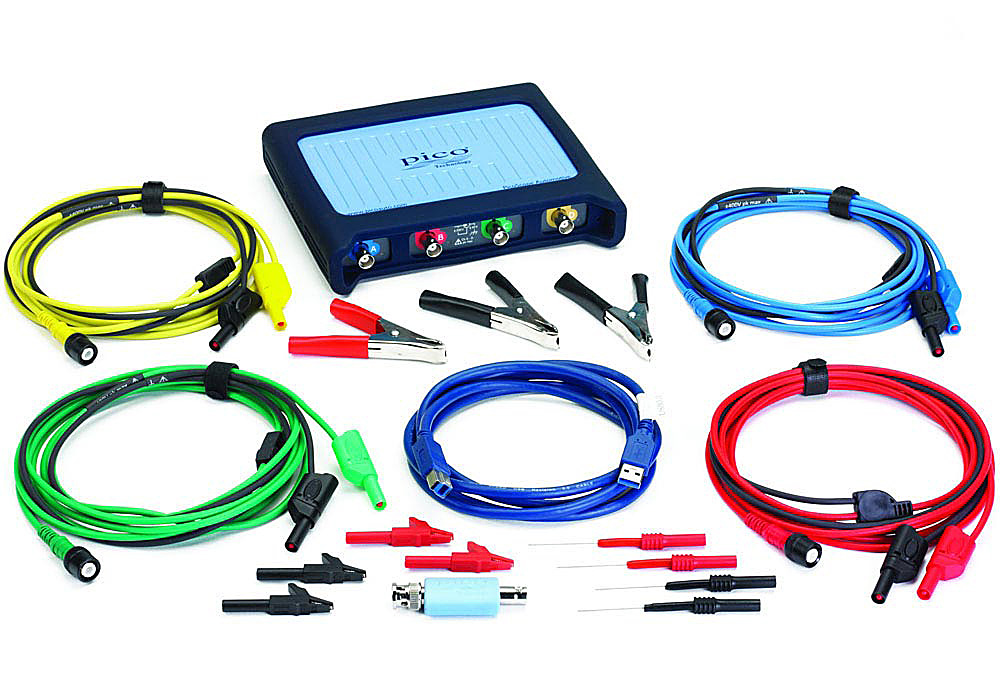
The signal pattern of the crank and cam angle pick-ups can be checked with scoping equipment. New chains will show overlapping cam and crank signals. Worn chains will show time delay on the cam signal meaning the red signal is further to the right.
How to connect to the sensors
 |
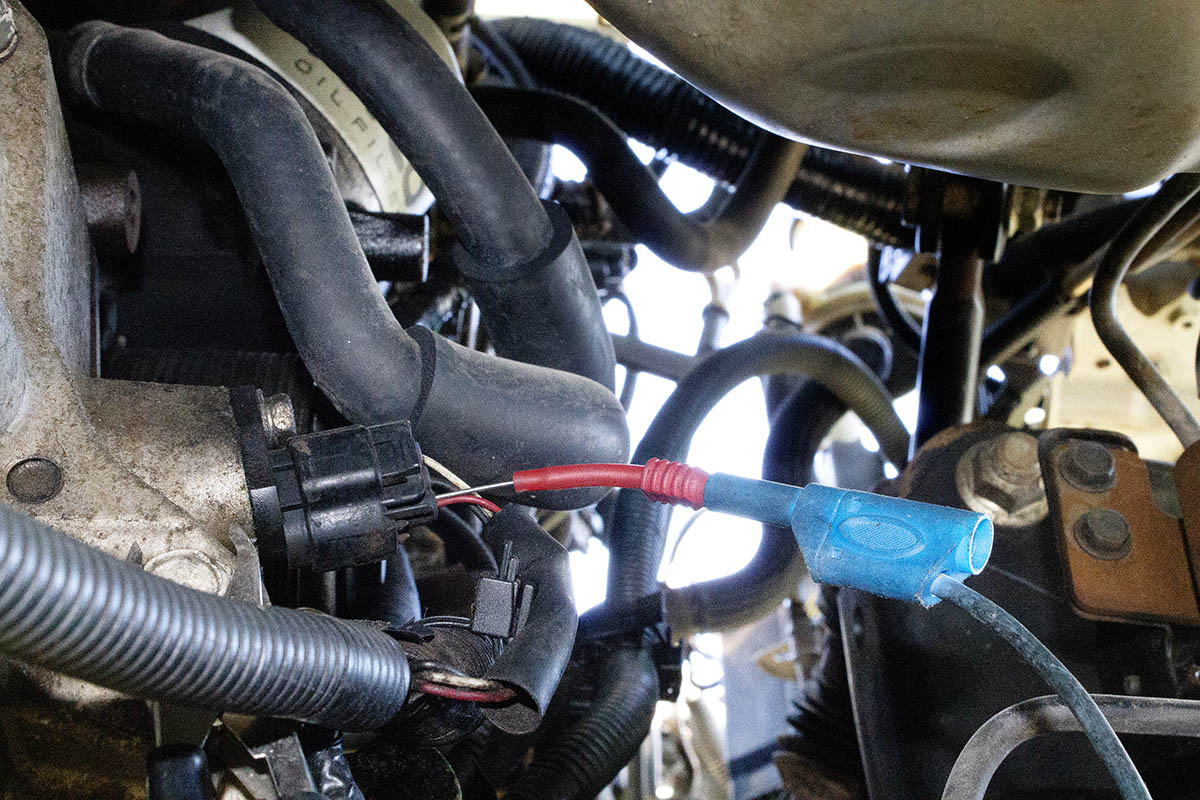 |
|
| Camshaft sensor connected to the red wire | Crankshaft sensor connected to the red wire |
How to read the oscilloscope output wave capture
The blue is the crankshaft signal and the red is the camshaft signal. Small blue pattern is 2 deg crankshaft. The large blue is 4 deg crankshaft.
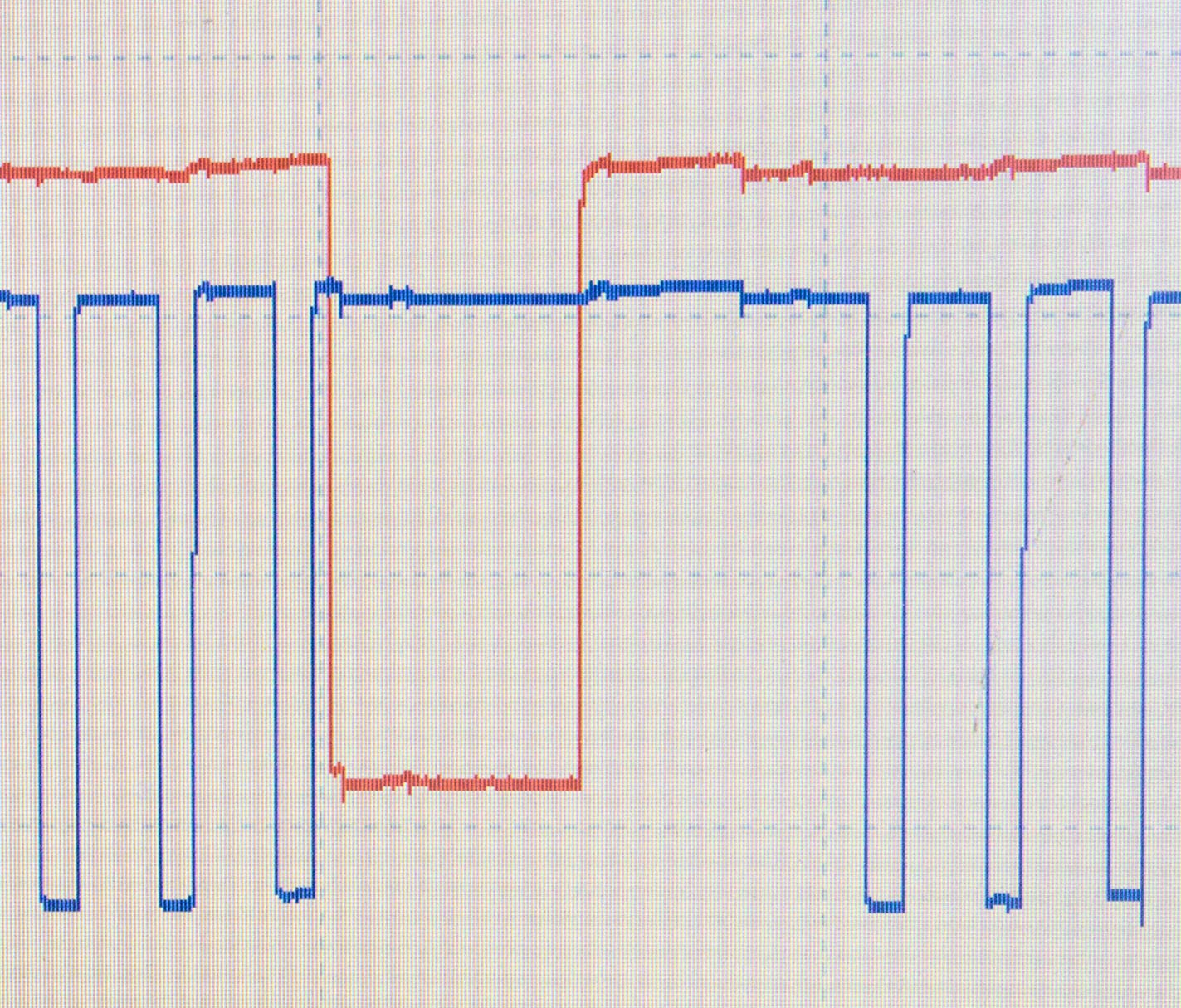 |
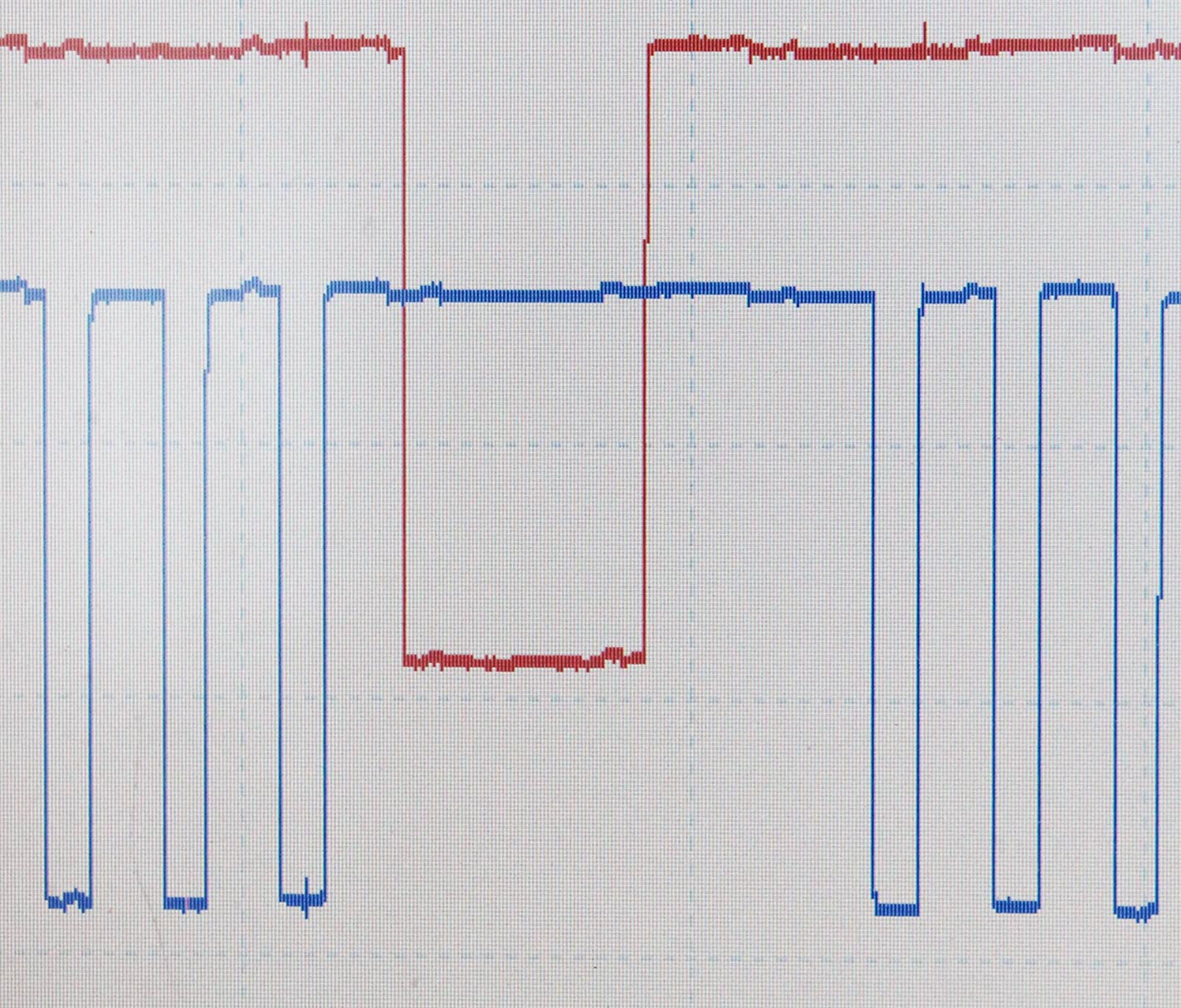 |
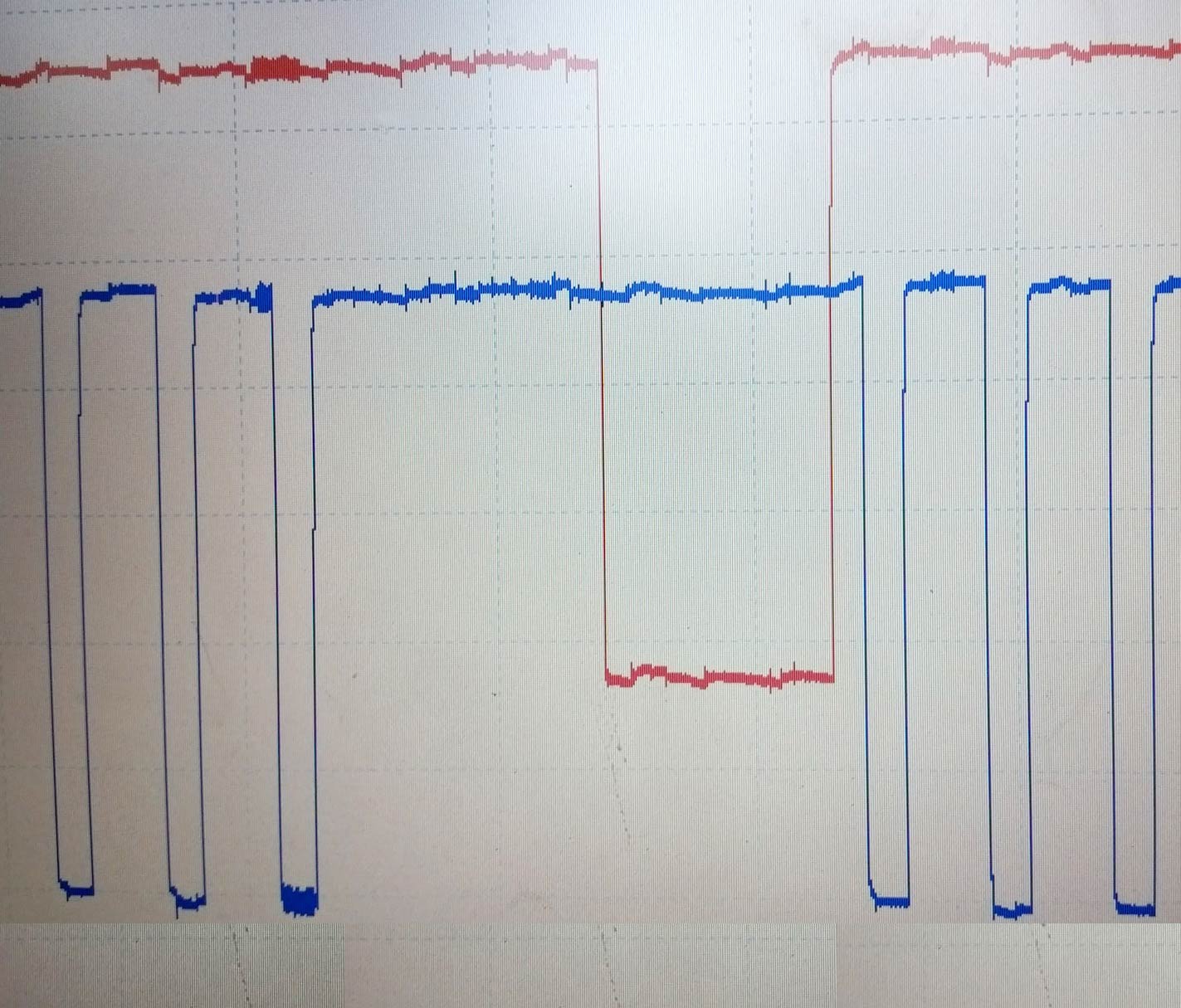 |
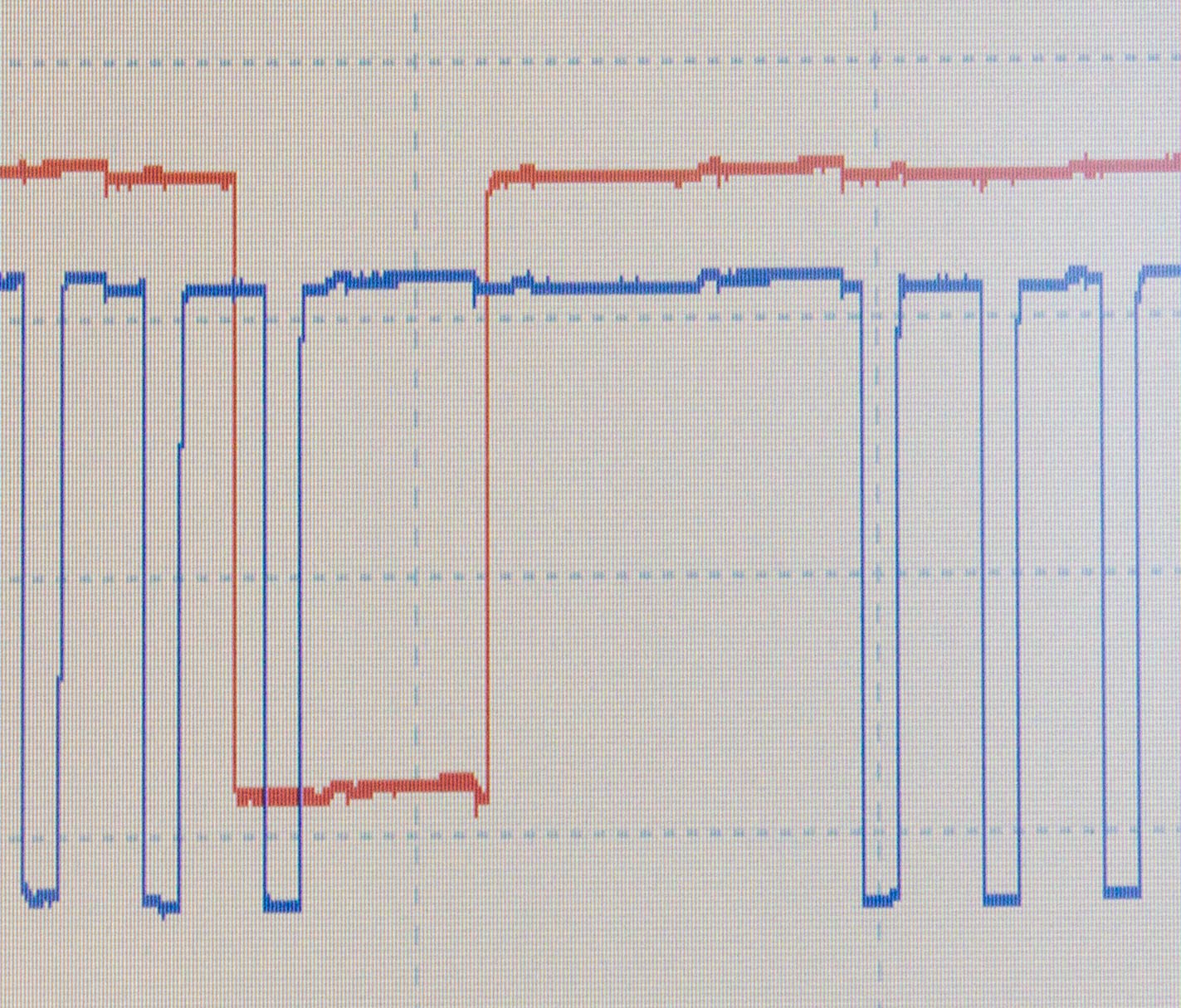 |
|||
When the red signal is all the way to the left in the blue this indicates the chain are in good condition |
When the red signal is as above in the blue this indicates the chains are 30 % worn. |
When the red signal is all the way to the right in the blue this indicates the chains are worn out |
When our chains are fitted they show 1 to 3 Degree advanced as shown above |
It is important to understand the hardening process for chain pins and bushes. The outer skin is hardest. As the pins and bushes wears the metal becomes softer. What this means is that if the red signal is in the center of the blue than it looks like 1/2 worn. However wear increases as the hardest part of the skin is worn away. The last amount of wear will occur much faster than the first.
It is important to compare at least 10 screen shots to look for changes in the camshaft and crankshaft referencing. If the signal output is jumping around this is bad no matter where the pattern is showing. This is an indication of worn links in the chain. Constant pattern output indicates even wear to the chains.
Buyer beware!!!!! Be very cautious before spending money on a timing chain job without having this check done first. We do this diagnostic test with you looking over our shoulder. The purpose of this page is to educate you so don't get BS to and ripped off. I explain to you in detail what each capture means. I encourage you to take photos of the screen data. Few workshops have this device due to the equipment cost and also for the fact this test tells you exactly as it is. This is a free service we provide. Don't miss out it could save you thousands.
We at YD25.com.au hope you have found this information useful.
For more information please submit your query using our online form or contact Paul directly on (+61) (0) 424 034 935.
Last updated August 2019
Download this procedure in pdf
Should you find your chain is worn and needs replacing please click here



